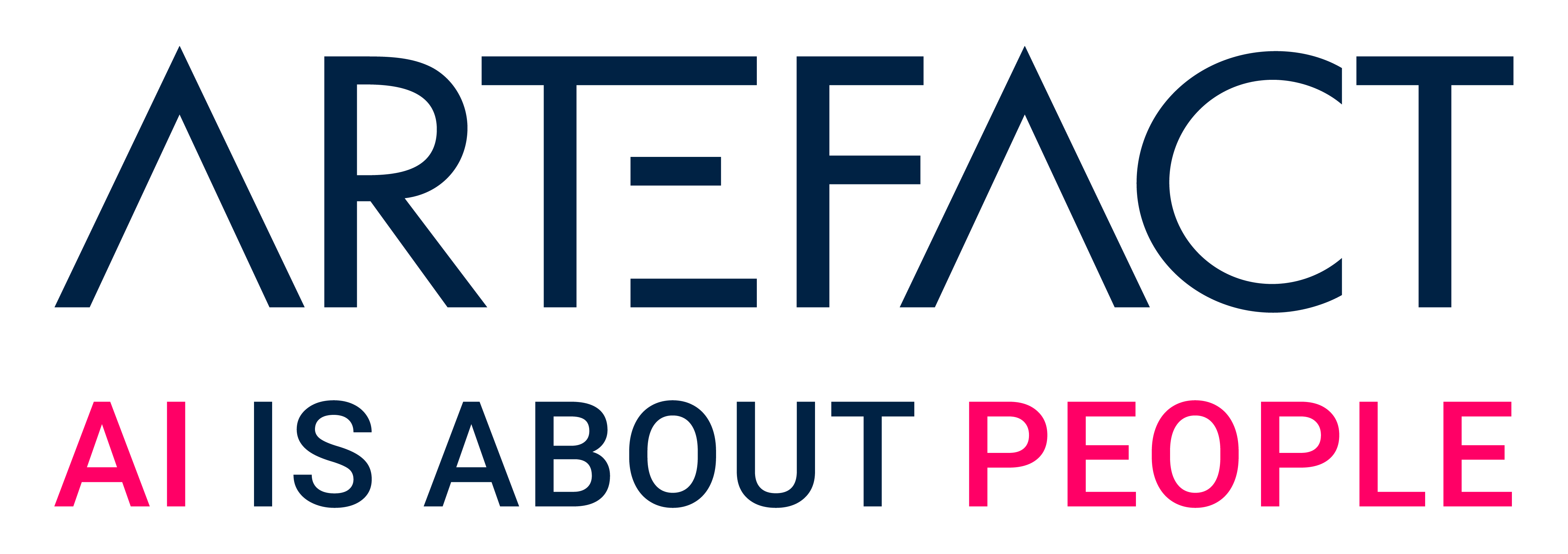Choice-Learn is a Python package designed to help you formulate, estimate, and deploy discrete choice models, e.g., for assortment planning. The package provides ready-to-use datasets and models studied in the academic literature. It also provides a lower level use if you wish to customize the specification of the choice model or formulate your own model from scratch. Choice-Learn efficiently handles large-scale choice data by limiting RAM usage.
Choice-Learn uses NumPy and pandas as data backend engines and TensorFlow for models.
- Introduction - Discrete Choice modeling
- What's in there ?
- Getting Started
- Installation
- Usage
- Documentation
- Contributing
- Citation
- References
Discrete choice models aim at explaining or predicting choices over a set of alternatives. Well known use-cases include analyzing people's choice of mean of transport or products purchases in stores.
If you are new to choice modeling, you can check this resource. The different notebooks from the Getting Started section can also help you understand choice modeling and more importantly help you for your usecase.
- The ChoiceDataset class can handle choice datasets with efficient memory management. It can be used on your own dataset. [Example]
- Many academic datasets are integrated in the library and ready to be used:
| Dataset | Raw Data | Origin | from choice_learn.datasets import | Doc |
|---|---|---|---|---|
| SwissMetro | csv | Bierlaire et al. (2001) [2] | load_swissmetro | # |
| ModeCanada | csv | Forinash and Koppelman (1993) [3] | load_modecanada | # |
| Train | csv | Ben-Akiva et al. (1993) [5] | load_train | # |
| Heating | csv | Kenneth Train's website | load_heating | # |
| HC | csv | Kenneth Train's website | load_hc | # |
| Electricity | csv | Kenneth Train's website | load_electricity | # |
| Stated Car Preferences | csv | McFadden and Train (2000) [9] | load_car_preferences | # |
| TaFeng Grocery Dataset | csv | Kaggle | load_tafeng | # |
| ICDM-2013 Expedia | url | Ben Hamner and Friedman (2013) [6] | load_expedia | # |
| London Passenger Mode Choice | url | Hillel et al. (2018) [11] | load_londonpassenger | # |
- Different models are already implemented. You can import and parametrize the models for your own usage.
- Otherwise, custom modeling is made easy by subclassing the ChoiceModel class and specifying your own utility function. [Example]
List of implemented & ready-to-use models:
| Model | Example | Colab | Related Paper | from choice_learn.models import | Doc |
|---|---|---|---|---|---|
| MNL | notebook |  |
SimpleMNL | # | |
| Conditional Logit | notebook |  |
Train et al. [4] | ConditionalLogit | # |
| Nested Logit | notebook |  |
McFadden [10] | NestedLogit | # |
| Latent Class MNL | notebook |  |
LatentClassConditionalLogit | # | |
| Halo MNL | notebook |  |
Maragheh et al. [14] | HaloMNL | # |
| Low-Rank Halo MNL | notebook |  |
Ko and Li [15] | LowRankHaloMNL | # |
| NN-based Model | Example | Colab | Related Paper | from choice_learn.models import | Doc |
|---|---|---|---|---|---|
| RUMnet | notebook |  |
Aouad and Désir [1] | RUMnet | # |
| TasteNet | notebook |  |
Han et al. [7] | TasteNet | # |
| Learning-MNL | notebook |  |
Sifringer et al. [13] | LearningMNL | # |
| ResLogit | notebook |  |
Wong and Farooq [12] | ResLogit | # |
Algorithms leveraging choice models are integrated within the library:
You can find the following tutorials to help you getting started with the package:
- Generic and simple introduction [notebook][doc]
- Detailed explanations of data handling depending on the data format [noteboook][doc]
- A detailed example of conditional logit estimation [notebook][doc]
- Introduction to custom modeling and more complex parametrization [notebook][doc]
- All models and algorithms have a companion example in the notebook directory
To install the required packages in a virtual environment, run the following command:
The easiest is to pip-install the package:
pip install choice-learnOtherwise you can use the git repository to get the latest version:
git clone git@github.com:artefactory/choice-learn.gitFor manual installation, Choice-Learn requires the following:
- Python (>=3.9, <3.13)
- NumPy (>=1.24)
- pandas (>=1.5)
For modeling you need:
- TensorFlow (>=2.14, <2.17)
⚠️ Warning: If you are a MAC user with a M1 or M2 chip, importing TensorFlow might lead to Python crashing. In such case, use anaconda to install TensorFlow withconda install -c apple tensorflow.
An optional requirement used for coefficients analysis and L-BFGS optimization is:
- TensorFlow Probability (>=0.22)
Finally for pricing or assortment optimization, you need either Gurobi or OR-Tools:
- gurobipy (>=11.0)
- ortools (>=9.6)
💡 Tip: You can use the poetry.lock or requirements-complete.txt files with poetry or pip to install a fully predetermined and working environment.
Here is a short example of model parametrization to estimate a Conditional Logit on the ModeCanada dataset.
from choice_learn.data import ChoiceDataset
from choice_learn.models import ConditionalLogit, RUMnet
from choice_learn.datasets import load_modecanada
transport_df = load_modecanada(as_frame=True)
# Instantiation of a ChoiceDataset from a pandas.DataFrame
dataset = ChoiceDataset.from_single_long_df(df=transport_df,
items_id_column="alt",
choices_id_column="case",
choices_column="choice",
shared_features_columns=["income"],
items_features_columns=["cost", "freq", "ovt", "ivt"],
choice_format="one_zero")
# Initialization of the model
model = ConditionalLogit()
# Creation of the different weights:
# add_coefficients adds one coefficient for each specified item_index
# intercept, and income are added for each item except the first one that needs to be zeroed
model.add_coefficients(feature_name="intercept",
items_indexes=[1, 2, 3])
model.add_coefficients(feature_name="income",
items_indexes=[1, 2, 3])
model.add_coefficients(feature_name="ivt",
items_indexes=[0, 1, 2, 3])
# add_shared_coefficient add one coefficient that is used for all items specified in the items_indexes:
# Here, cost, freq and ovt coefficients are shared between all items
model.add_shared_coefficient(feature_name="cost",
items_indexes=[0, 1, 2, 3])
model.add_shared_coefficient(feature_name="freq",
items_indexes=[0, 1, 2, 3])
model.add_shared_coefficient(feature_name="ovt",
items_indexes=[0, 1, 2, 3])
history = model.fit(dataset, get_report=True)
print("The average neg-loglikelihood is:", model.evaluate(dataset).numpy())
print(model.report)A detailed documentation of this project is available here.
TensorFlow also has extensive documentation that can help you.
An academic paper has been published in the Journal of Open-Source Software, here.
You are welcome to contribute to the project ! You can help in various ways:
- raise issues
- resolve issues already opened
- develop new features
- provide additional examples of use
- fix typos, improve code quality
- develop new tests
We recommend to first open an issue to discuss your ideas. More details are given here.
If you consider this package and any of its feature useful for your research, consider citing our paper.

@article{Auriau2024,
doi = {10.21105/joss.06899},
url = {https://doi.org/10.21105/joss.06899},
year = {2024},
publisher = {The Open Journal},
volume = {9},
number = {101},
pages = {6899},
author = {Vincent Auriau and Ali Aouad and Antoine Désir and Emmanuel Malherbe},
title = {Choice-Learn: Large-scale choice modeling for operational contexts through the lens of machine learning},
journal = {Journal of Open Source Software} }The use of this software is under the MIT license, with no limitation of usage, including for commercial applications.
Choice-Learn has been developed through a collaboration between researchers at the Artefact Research Center and the laboratory MICS from CentraleSupélec, Université Paris Saclay.
[1]Representing Random Utility Choice Models with Neural Networks, Aouad, A.; Désir, A. (2022)
[2]The Acceptance of Model Innovation: The Case of Swissmetro, Bierlaire, M.; Axhausen, K., W.; Abay, G. (2001)
[3]Applications and Interpretation of Nested Logit Models of Intercity Mode Choice, Forinash, C., V.; Koppelman, F., S. (1993)
[4]The Demand for Local Telephone Service: A Fully Discrete Model of Residential Calling Patterns and Service Choices, Train K., E.; McFadden, D., L.; Moshe, B. (1987)
[5] Estimation of Travel Choice Models with Randomly Distributed Values of Time, Ben-Akiva, M.; Bolduc, D.; Bradley, M. (1993)
[6] Personalize Expedia Hotel Searches - ICDM 2013, Ben Hamner, A.; Friedman, D.; SSA_Expedia. (2013)
[7] A Neural-embedded Discrete Choice Model: Learning Taste Representation with Strengthened Interpretability, Han, Y.; Calara Oereuran F.; Ben-Akiva, M.; Zegras, C. (2020)
[8] A branch-and-cut algorithm for the latent-class logit assortment problem, Méndez-Díaz, I.; Miranda-Bront, J. J.; Vulcano, G.; Zabala, P. (2014)
[9] Stated Preferences for Car Choice in Mixed MNL models for discrete response., McFadden, D. and Kenneth Train (2000)
[10] Modeling the Choice of Residential Location, McFadden, D. (1978)
[11] Recreating passenger mode choice-sets for transport simulation: A case study of London, UK, Hillel, T.; Elshafie, M. Z. E. B.; Jin, Y. (2018)
[12] ResLogit: A residual neural network logit model for data-driven choice modelling, Wong, M.; Farooq, B. (2021)
[13] Enhancing Discrete Choice Models with Representation Learning, Sifringer, B.; Lurkin, V.; Alahi, A. (2018)
[14] A Customer Choice Model with HALO Effect, Maragheh, R., Y.; Chronopoulou, A.; Davis, J., M. (2018)
[15] Modeling Choice via Self-Attention, Ko, J.; Li, A., A. (2023)
Official models implementations:
[1] RUMnet
[7] TasteNet [Repo1] [Repo2]
[12] ResLogit
[13] Learning-MNL


















